Volcano Live
volcanolive.com
Garbuna Volcano | John Seach

West New Britain Province, Papua New Guinea
5.45 S, 150.03 E
summit elevation 850 m
stratovolcanoes
Garbuna volcano is located at the southern end of the Willaumez Peninsula, New Britain, Papua New Guinea. Garbuna volcano erupted on 17th October 2005 after being dormant for 1700 years.
Photos of Gabuna volcano by John Seach
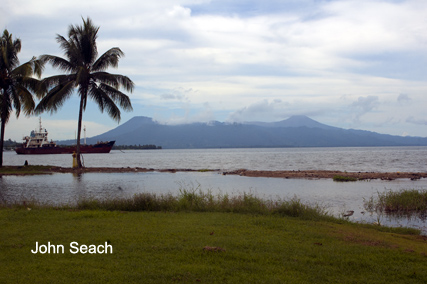
Garbuna volcano from Kimbe 2005
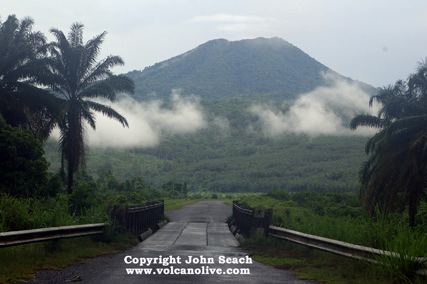
Garbuna Volcano - John Seach
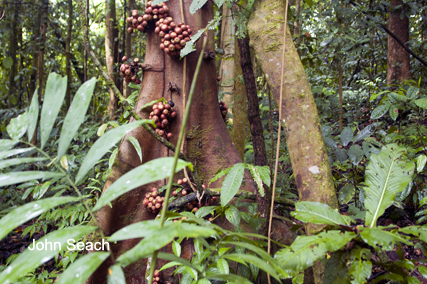
Garbuna volcano 2005

Ashfall from Garbuna eruption in 2005
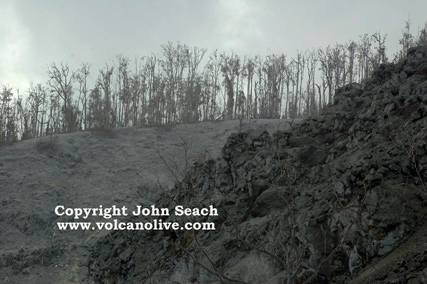
Garbuna summit during 2005 eruption

Dangers in Garbuna jungle

Cockatoo, Garbuna volcano
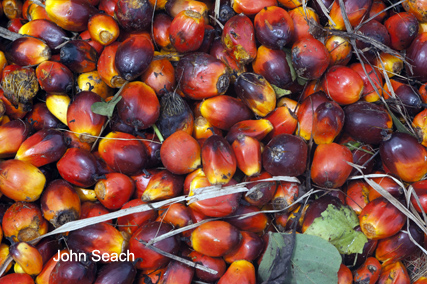
Palm oil plantation, Garbuna volcano
Prior to the 2005 eruption, Garbuna volcano was considered to be in the solfatara stage. The main features were the presence of boiling mud pools, hot springs and sulphur emitting vents. In 1985, a geological survey recorded Garbuna volcano as dormant, but potentially hazardous.
A recent looking blocky dacite lava flow at the summit
of Garbuna suggests a recent eruption.
2008 Eruptions
Eruptions at Garbuna volcano occurred on 11th March 2008. Ashfall
and booming noises were heard at the volcano. On 17th March
seismicity increased to a moderate level. Light gray ash emissions
were visible at Garbuna volcano on 13th July 2008. Emissions reached
1km above the summit.
Eruptions resumed at Garbuna Volcano in Papua New Guinea on 23rd
September 2008. A pale gray ash column was observed rising to 1000 m
altitude. Sustained volcanic tremor was recorded at the volcano on
29th and 30th September 2008. Incandescent lava eruptions were
observed in August 2008.
2005 Eruptions
John Seach climbed to the summit of Garbuna volcano on 14th and 17th
November 2005, four weeks after the first eruption in 1700 years.
The eruption began with a felt earthquake on 16th October 2005.
Jet-like, and rumbling noises were heard at the volcano, followed by
ash emissions. A local resident notified Air Nuigini, because the
the flight path into Hoskins airport passed over the volcano. Darwin
Volcanic Ash Advisory Centre issued a warning notice to pilots. John
Seach observed the summit region which contained a steaming crater,
devastated trees, and fresh mud deposits. Continuous seismic
activity was recorded while on the summit. Heavy rainfall caused a
lahar down the western flank of the volcano.
Further reading
Lowder, G.G. and CARMICHAEL, I.E., 1970. The volcanoes and caldera of Talasea, New Britain: geology and petrology. Geological Society of America Bulletin, 81(1), pp.17-38.
McKee, C.O., Neall, V.E. and Torrence, R., 2011. A remarkable pulse of large-scale volcanism on New Britain Island, Papua New Guinea. Bulletin of Volcanology, 73(1), pp.27-37.
Garbuna Volcano Eruptions
2008, 2005, ~300 AD